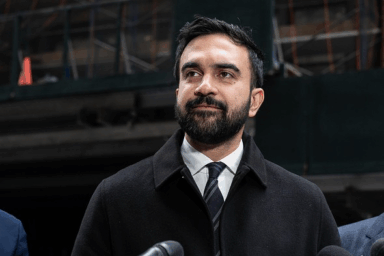Anytime government or corporate interests allege an imminent crisis, journalists must guard themselves against manipulative terminology.
Take the report the Obama administration released yesterday showing that the Social Security and Medicare trust funds are being depleted at a faster rate, thanks in part to the recession. The Medicare fund will run out of money in 2017, two years earlier than projected last year, and the Social Security fund will be empty in 2037, four years earlier than projected.
Treasury Secretary Tim Geithner, the head of the funds’ trustee committee, explained the problem in terms of “solvency,” a concept that was similarly ballyhooed during Bush’s push to privatize Social Security. Then the papers ran with it.
“REPORT WARNS OF INSOLVENCY FOR SOCIAL SECURITY, MEDICARE,” blared the Washington Post print-edition headline. The writer of the A1 story, Amy Goldstein, equated insolvency with “imminent financial collapse.”
The Wall Street Journal ran a headline similar to the Post‘s. So did the New York Times in the print edition and the initial web-version of the story.
However, Times editors, interestingly enough, removed “insolvency” from the headline and lead paragraphs of later web-versions of the story, and restricted the term to the following sentence in the fifth paragraph:
The projected date of insolvency, a widely used measure of the benefit programs’ financial health, shows the immense difficulties Mr. Obama and Congress will face in trying to shore them up while also extending health coverage to millions of Americans.
Clearly someone on the Times editorial staff questioned the use of the term and caused the piece to be reworked.
That “insolvency” is “widely used”—that Geithner, for example, uses it—doesn’t mean it’s aptly used. The Social Security and Medicare trust funds aren’t companies. They can’t go bankrupt or lead to the “financial collapse” of the two programs. Take Social Security, for example. Whenever its trust fund eventually runs out of money, the program will still pay benefits—not the full benefits promised under the program, but rather about 75 percent. The point is, people will still receive Social Security payments.
I don’t want to suggest that the long-term financial health of Social Security and Medicare isn’t an important issue that needs to be resolved. All I am suggesting is that we need to see the “insolvency” language for what it is—a buzzword meant to rush the public into accepting whatever solution is favored by the powers that be.
In fact, the Obama administration immediately used the report to float its own solution:
Administration officials said that if Congress were to act immediately, the impending gap could be filled three ways: by raising workers’ Social Security payroll taxes by 2 percentage points, from 12.4 percent to 14.4 percent; by reducing benefits by 13 percent; or a combination of the two approaches. The officials briefed reporters on the condition of anonymity on the technical aspects of the trustees’ findings.
Actually, there are many ways the impending gap could be filled, and they needn’t require the regressive payroll tax increases or cuts in benefits that these anonymous officials suggested. The cap on the Social Security tax could be raised from its current $102,000 ceiling. Or benefits could be cut for the wealthy (unfair, perhaps, on the principle that you should get out what you put into the system, but still possible). Or the retirement age could be raised. Or a combination of changes could be implemented. The point is that we shouldn’t let “insolvency” talk scare us from weighing all our options.


